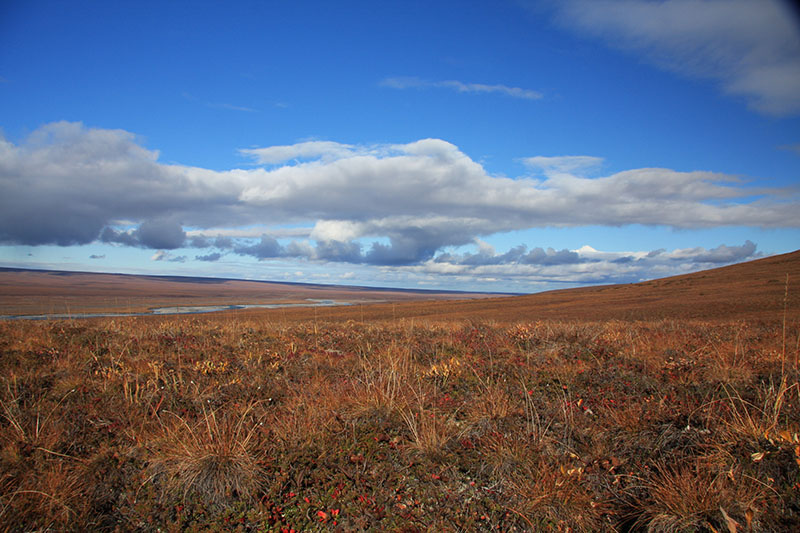
Our long term goal is to secure permanent protections for the Arctic Refuge, that ensure Native Alaskan access and keep the lands, water, and wildlife healthy.
At 19.6 million acres it is the largest wildlife refuge in the country. Its habitats range from boreal forests, to rivers, tundra, lakes and wetlands to coastal lagoons, barrier lands and bays of the Arctic Ocean. Even for those who may never set foot there, the Arctic Refuge is an important symbol of conservation, and a cornerstone of the hope and peace of mind that can only be found in connecting with nature.
The Arctic Refuge is also home to some of our most iconic species of wildlife, including polar bears, grizzly bears, musk oxen, Dall sheep, wolves, wolverines and many more. Each year, the Arctic Refuge coastal plain’s vast expanse of lush tundra acts as the birthing grounds for much of this wildlife. Birds we see in our own backyards, in all 50 states and across six continents, begin their lives in the Arctic Refuge. The Refuge’s coastal plain is the most important land habitat for mother polar bears, who build dens there each year to give birth to their cubs.
The coastal plain has been left out of federal protections that were created in 1960, when the Refuge was officially established by President Eisenhower, and has been the center of heated political debate for many years. Bills to protect the coastal plain as wilderness have been introduced in every Congress since 1986. Proposals to open the coastal plain to oil and gas drilling have been just as common.
After the 2017 Tax Cuts and Jobs Act passed, we launched a campaign targeting the corporations that would enable drilling. The legislation had opened the Refuge up to lease sales, and our goal was to ensure as few bidders as possible by making it clear that drilling the Refuge was bad business, more than just morally and environmentally, but economically.
By the end of 2020 we had successfully pressured all major U.S. banks to not fund drilling in the arctic. This victory is the result of years of pressure from shareholders, leaders of the Gwich'in and Iñupiat peoples, and hundreds of thousands of activists from the Sierra Club and other organizations. You can read more about that history here.
Ultimately, there were only three bidders and the lease sale on January 6, 2021 raised a fraction of what was predicted. Following his inauguration, President Biden has paused the lease sale process, but the leases that were issued earlier this year still pose a threat. We are targeting the corporations that bid on these leases, 88 Energy, Knik Arm Services and the Alaska Industrial Development and Export Authority (AIDEA), a state-owned corporation with a history of being involved in unpopular and unprofitable development such as Ambler Road.